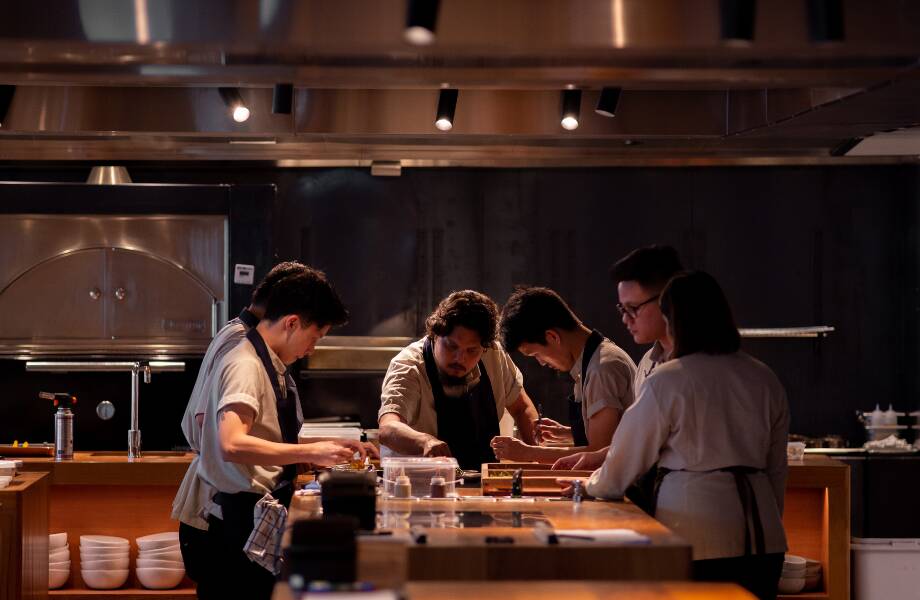Chinese Takeout is a bite-sized, biweekly RADII feature that examines Chinese food from the inside out, by disentangling the (hi)stories behind a single dish or restaurant. Write to us if you have a suggestion or submission.
For most people, flies aren’t an association you want much to do with — especially when it comes to food. But Chengdu, a UNESCO-recognized city for gastronomy, could care less.
With a long, rich culinary history and ample opportunity for both high and low dining, the Sichuan provincial capital is dotted with humble, unassuming eateries that residents call “fly restaurants” (苍蝇馆子 cangying guanzi). It’s a term that many say originally referred to the questionable hygiene of these hole-in-the-walls.
But while the standards might not be five-star, the term “fly restaurant” doesn’t equate “dirty” anymore — although some joke that locals still swarm like flies to them for the food. “In Chengdu, ‘cangying guanzi’ just means a ‘small restaurant,’” explains food writer Yang Xiaoxu, who grew up in Chengdu. “They’re doing some home cooking, very casual jiachangcai,” she says referring to the style of food that these mom-and-pop restaurants turn out.
And of these fly restaurants, Ming Ting is easily one of the most famous.
The Place
In truth, Chengdu’s most famous fly restaurant arguably isn’t really even a fly restaurant anymore. While Ming Ting’s décor is stripped down, the space itself is comparatively large — two sizeable rooms with big glass-topped wooden tables and sturdy chairs — and clean, with advertisements for popular social media video app Douyin (TikTok) dangling from the ceiling.

The thing about fly restaurants is that they’re democratizing. Some ride bicycles to get to one, while others arrive in BMWs. Office workers in suits sit back to back with construction workers, slurping up noodles or spooning tofu in their bowls. At Ming Ting, this still holds true. International students chat happily near tables filled with three generation of family, groups of fashion-forward Chengdu youth and the odd solo diner — everyone is here for the food.
Related:
 Chinese Takeout: A Brothers’ Bond Over Beef in ChengduTwo 60-year-old brothers have run a beef-only restaurant in Chengdu for almost 40 yearsArticle May 09, 2019
Chinese Takeout: A Brothers’ Bond Over Beef in ChengduTwo 60-year-old brothers have run a beef-only restaurant in Chengdu for almost 40 yearsArticle May 09, 2019
The History
Founded over 20 years ago, Ming Ting’s name is a compound of the husband and wife founders’ names, Zhang Fuming and Zhang Ting. The pair started the business in a small alleyway near the Caojiaxiang vegetable market as a way of supporting their young son, who suffered from congenital paralysis.
Over the years, what begin as a ramshackle neighborhood operation with only a few dishes on offer blossomed into seating for hundreds, a small army of cooks and a long menu of signature dishes. Then in October 2013, the government demolished the Caojiaxiang market, and Ming Ting had to close.
“We’ll take this as an opportunity to upgrade things,” Zhang Ting told West China Metropolis Daily at the time, explaining their intentions to stay in the neighborhood and still offer the same down-to-earth eats. A month later, Ming Ting reopened a few doors down from their previous digs, in a smaller but more polished space.

“It’s not truly a fly restaurant,” Zhang Fuming said to the same paper upon opening. “We had to catch up with the times,” he continued, noting that the new Ming Ting had better lighting, WiFi, air conditioning and two private dining rooms.
And they’ve stayed apace with the times in the years since. You can queue online via the Dazhong Dianping app, and place a digital order on their company WeChat channel. Diners can even buy Ming Ting branded chili sauce on their WeChat shop to take home with them.
Related:
The Food
Despite the upgrades, the heart of the fly restaurant is still there. Unlike the photogenic cafes with tasteless cakes flooding China’s metropolises, these small Chengdu eateries are all about what’s on the table — and Ming Ting is no different.
Since the beginning, the number one dish that the Zhangs’ restaurant has been known for is naohua doufu (脑花豆腐) — a mapo tofu-style dish with pig brain that’s rich and deep in flavor with a stiff kick of Sichuan spice. “It’s a higher-level fly restaurant,” says Yang, citing the tofu as an example. “I can’t guarantee that they invented it, but the first time I had naohua doufu was there.”
Ming Ting’s other signature dishes are equally as sumptuous, in a way that you might not expect down-home cooking to be. A lotus-leaf packet that unfurls to reveal glistening curls of steamed pork belly (pictured at top), next to a large platter of diced rabbit with green chillies and mouth-numbing Sichuan peppercorns.

Qixiang (奇香) pork spare ribs arrive under a shower of chopped pickled cowpeas, the fried meat balanced by a sharp sour twang.
“Even though the look of a fly restaurant is gone,” long-time employee Zhao Dequan told West China Metropolis Daily on reopening in 2013, “the lining is still there.” And years later, he’s still not wrong.
All photos by Cat Nelson
















